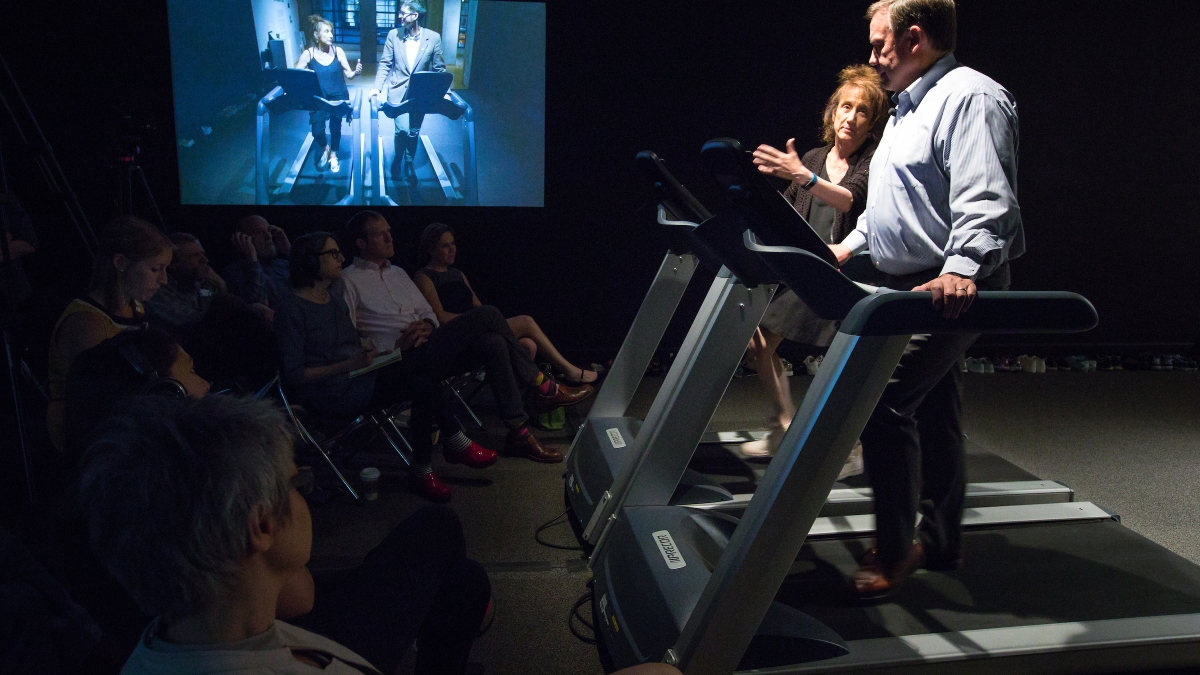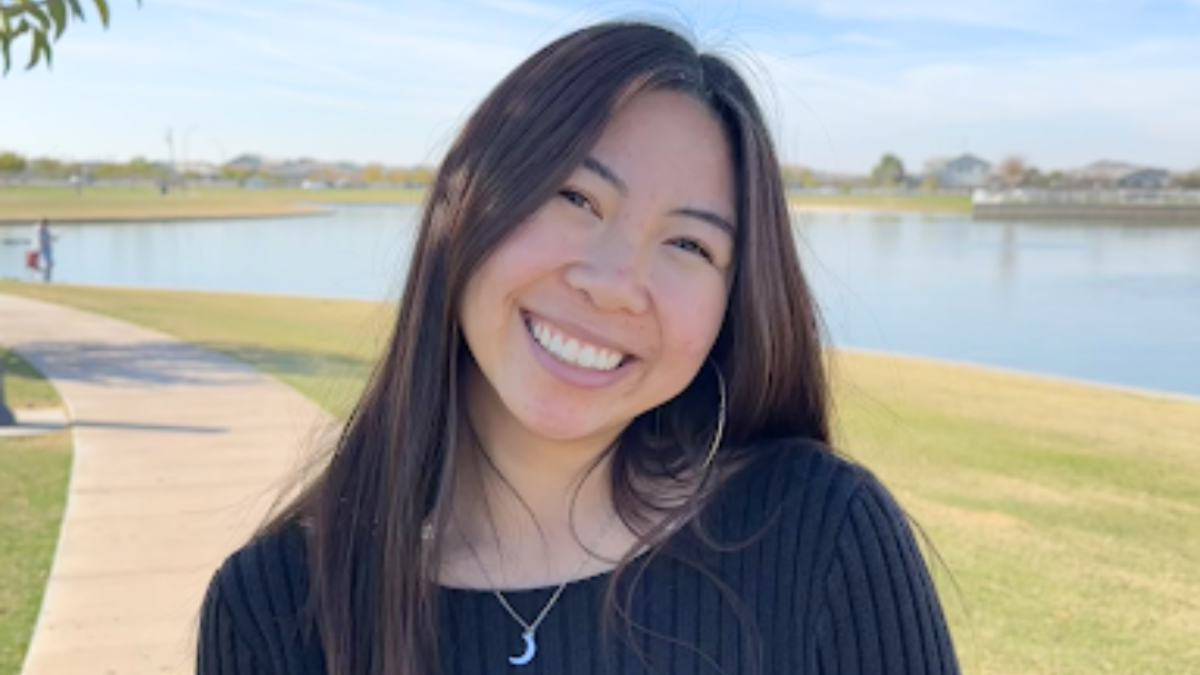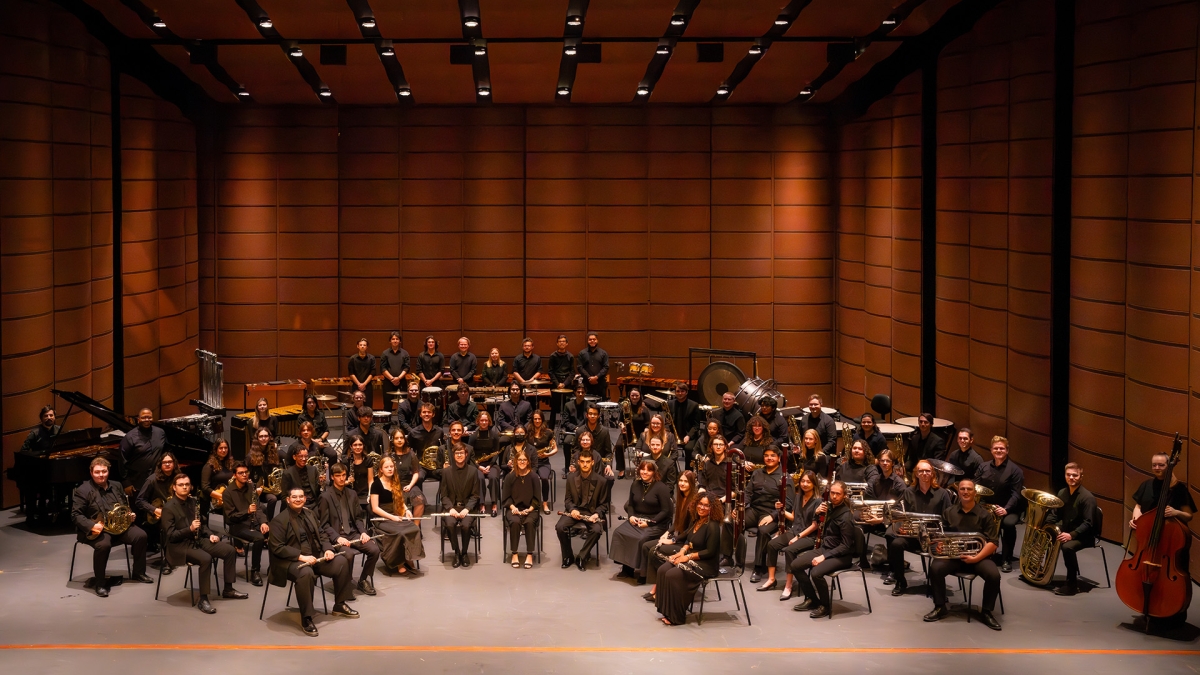Finding solutions one step at a time
Gallery brings MacArthur fellow, ASU community members together for conversations on treadmills

Liz Lerman is somebody who both talks the talk and walks the walk. Over the course of the past semester, she’s been doing both in a gallery in the ASU Art Museum.
For “Minds on the Move: The Treadmill Tapes,” the MacArthur fellow and Herberger Institute professor invited members of the ASU community to join her on side-by-side treadmills to talk about whatever is most “current, curious, urgent, or vexing” for them.
The first walk she took in the museum, in January, was with Cristóbal Martinez, a scholar in rhetoric, composition and linguistics and a member of the indigenous arts collective Postcommodity. For the final installment of this iteration of the Treadmill Tapes, she walked with ASU President Michael Crow.
In between, she walked and had conversations with 36 people: ASU students, faculty and staff. These conversations were projected onto three of the gallery’s walls during the course of the exhibition.
Lerman believes that when you walk and discuss something at the same time, the conversation goes in interesting and unexpected directions, as if it's energized by the walking. As Crow said toward the end of their walk together, "Things happen in your brain. It's a little clearer."
Walking, and movement more generally, are how Lerman processes the world. A dancer from childhood, she founded the groundbreaking Liz Lerman Dance Exchange in 1976 and led the group for 34 years. In addition to performing on the stage, she has taken her practice into nursing homes and religious institutions, into prisons and hospitals — in keeping with her belief that the Dance Exchange needed to keep one foot in the community and one in the concert world.
During a Treadmill Talk with Herberger Institute dean Steven J. Tepper, Lerman said she “was given some deep missions in life that went well beyond me.” These came in large part from her father, a civil rights activist, and her mother, who “lived and breathed art.” Lerman herself could be described as both an arts activist and civil rights artist. She’s a proponent of the power of artistic practice and the role that artistically driven research can play beyond the art world, and she practices what she preaches.
In 2005, she was commissioned to create a piece for an international conference on human rights at Harvard Law School. The law professor who commissioned the piece wrote to Lerman that she hoped a dance “would reach people who seldom think about mass atrocities — students, lawyers — with the chance to be drawn in emotionally and intellectually.
At Wesleyan University, she premiered a piece called “Ferocious Beauty: Genome,” as part of the institution’s goal of connecting art and science, for which the dancers worked with geneticists. The challenge and the paradox of the piece, she wrote, was “to take a subject, genetics, and a form, modern dance, both of which can be difficult to understand, then to combine them into something that would be understandable.”
“From the beginning, dance has been a way for human beings to grasp what they otherwise could not comprehend,” she writes in her 2011 book “Hiking the Horizontal: Field Notes from a Choreographer.”
‘Beyond movement for movement’s sake’
Lerman arrived at ASU in January of 2016 as Herberger Institute’s first Institute Professor, and the first member of its Ensemble Lab. Her class, “Animating Research,” introduces students to her Critical Response Process, a four-step approach to giving and receiving artistic feedback, and links them to ASU research projects in a way that enables artists to refine their personal voice in the course of translating ideas, statistics and other research into new forms.
“I didn’t know about Liz Lerman before I took the class,” said David Olarte, a salsa dancer who earned master's degrees in dance, and in social and cultural pedagogy in 2016. (He’s entering the doctoral dance program in the fall.) “Some of my peers in the dance community told me she’s pretty much a living legend in the dance world.”
Olarte said that Lerman is “down to earth and extremely approachable, but at the same time she’s extremely intense when it comes to being an artist and a researcher and a teacher. You rarely find all three in one person.”
In a class that was both interdisciplinary and multigenerational, Olarte said, Lerman served as a mentor and a guide.
“The class was about using the arts to illustrate, animate, bring to life research of all kinds,” said Allyson Yoder, who earned her bachelor's degree in dance last year. “I remember Liz saying to us at the end of the class, ‘I don’t want you to feel like there’s anything out of your reach or anything you can’t approach with art.’ What she gave us was tools and techniques and a mindset, a way of listening and asking questions that can help you get to the heart of issues that are complicated and that might not seem immediately relevant to your life.”
“I feel like I have a starting place to tackle things that go beyond movement for movement’s sake.”
“For her, being an artist, you need to research what your topic is,” Olarte said. “It’s more than just being a self-absorbed artist. It’s about really making connections.”
Risk, Purpose, Love
Lerman has said that she sees research as “an act of conversation.” Conversely, in the case of the Treadmill Tapes, she also seems to approach conversation as an act of research.
Like Lerman, ASU President Michael Crow makes connections quickly and nimbly. Their hour-long treadmill talk was fast-moving and wide-ranging. (See an excerpt below.)
Over the course of 60 minutes, they touched on everything from the parallels between dancing and javelin throwing (Crow was a javelin thrower in college) to the Heisenberg Uncertainty Principle to the impact that Crow’s frequent moves as a child — he went to 17 different schools before graduating from high school — had on the way he sees the world. (Answer: “What you get from that is a sense that life is very different across all families. Everybody doesn’t have the same chance. There’s lots of natural favor that’s given to certain groups and certain people.”)
Along the way, Crow talked about how his youngest granddaughter, who is 18 months old, starts dancing when she hears music.
“It’s just amazing to watch her eyes light up,” he said. “Now what is that? That means that there’s something innate in human beings. I don’t know what it is, but there’s something innate in our desire to be connected to energy that’s taking a form that activates a certain thinking in our brain, and then allows us or desires us to express it. That could be sociological, could be biological. Could be one of those things, but she’s only 1 1/2 years old!”
“I think it’s also not just sociological or biological but it’s a form of comprehension,” Lerman said. “Physical is the first way we come to see and understand anything. And why we give that up over time, because we’re embarrassed or whatever — embodiment is a deep form of learning and discovery….”
“ ….and expression,” Crow added. “Every child is an explorer, every child is a natural learner, every child is an artist and a scientist. Every child.”
“Yes,” Lerman said. “I believe that, too.”
Choreographer, MacArthur 'Genius Grant' recipient and Herberger Institute Professor Liz Lerman takes a walk on treadmills with ASU President Michael Crow in the ASU Art Museum, on Thursday, April 27, as part of her "Minds on the Move: The Treadmill Tapes" exhibit. The two walked and talked for 55 minutes, covering 2.5 miles worth of topics ranging from their backgrounds to evolution, the necessity of higher education and the future. Photo by Charlie Leight/ASU Now
Lerman asked the president for his thoughts on three key concepts she’s been mulling over lately: risk, purpose and love.
“Those are three extremely important concepts,” Crow responded. “Among human beings, love is probably the most important, because I think it’s almost impossible for a human being to go it alone. I don’t think it’s possible.”
As for purpose, he said, “life’s purpose could be that, could be love, loving others, taking care of others and being part of others, that’s a huge part of everyone’s life. But I’m a believer that purpose has to be that plus other things.”
Lerman and Crow agreed that humans have an innate need for risk-taking. “That’s one reason I make art,” Lerman said.
As the walk drew to a close, Lerman asked Crow what’s bothering him these days. He replied that his answer changes minute to minute, and that in fact walking on the treadmill with Lerman had allowed him to relax and let go of some of the day’s tension.
Then he went on to say, “What I worry about is how do we work to broaden this concept — you’ve got these people running around now saying with artificial intelligence coming we're just going to have to give a guaranteed income to every person that will never be able to work again. And I’m like, well, whoever says that must not understand anything about human nature. Everyone needs to be creative, needs to be empowered, needs to be a part of the solution, needs to be figuring out how to make things happen. And so what I’m interested in is trying to find every day ways to move around this notion of ‘There will be a few winners and lots of losers.’”
And then eventually the treadmill slowed, to indicate the end of the final Treadmill Tape at ASU.
Crow asked Lerman what would happen to the tapes now. She answered that they would be archived and that there may be a podcast in the future. “People say amazing things when they’re walking on the treadmill.”
“That’s one of the things I never understand,” Crow said. “We have so many people and so many ideas and so many ways to express things. How do we synthesize them down to where people can capture them or glimpse them?”
Maybe, he posited, we need to figure out how to express things in ways that allow people to connect with them emotionally and then delve into them.
No doubt recognizing that the president had just articulated one of art’s primary jobs, Lerman replied, “I think that is a beautiful sentence with which to end.”
Excerpt from Lerman and Crow's Treadmill Tape conversation
Liz Lerman: I’m very interested in the possibility of flexible structures and how we bring them to the university.
Michael Crow: Well, we have flexible structures in that there’s no one that says to anyone here, ‘You must live within structure A or structure B,’ other than themselves. We don’t say that. We’ve created design freedom for those that want to exercise it. But lots of people are afraid to exercise it.
LL: So we’re back to fear.
MC: Fear not in an overwhelming sense. It’s kind of funny to me — so people always talk about well, we can’t do this because of that, we can’t do this because they might be upset, we can’t do that because we might be laughed at by the other universities.
LL: I just say, Be like water and go. That’s sort of my answer to that. It’s not quite the same, but it works, for me. Be like water, go around, go under, go through, whatever.
MC: And then also remember that everything water touches changes, so there is no static associated with anything that touches water, is in water, that water flows through or around; it’s changing constantly.
LL: This is why I like choreographic thinking. Because it supports constant change. With rigor, and understanding that it’s change.
MC: So constant change, constant reassessment, constant rethinking, constant conscious evolution. Human beings have been, for most of our species’ existence, evolving in meaningful and demonstrable ways but not well thought through. So we’re just now getting to the point where we’re thinking about it a little bit more. What do we want to be? Where do we want to end up, what do we want the world to be like? Not what can we make it like: What do we want it to be like.
More Arts, humanities and education

Sanford School Dean’s Medalist passionate about serving families, community
Editor’s note: This story is part of a series of profiles of notable spring 2024 graduates. Helping families and children succeed in society takes knowledgeable and understanding professionals. Few…

Sociology student passionate about preventing domestic and gender-based violence
Editor’s note: This story is part of a series of profiles of notable spring 2024 graduates. With so many diverse career options available to students, uncovering individual passions and ambitions is…

ASU Wind Symphony’s performance at regional conference motivates, inspires
ASU Wind Symphony students describe their recent performance at the College Band Directors National Association, or CBDNA, Regional Conference in Las Vegas and the journey that led them there as “…
